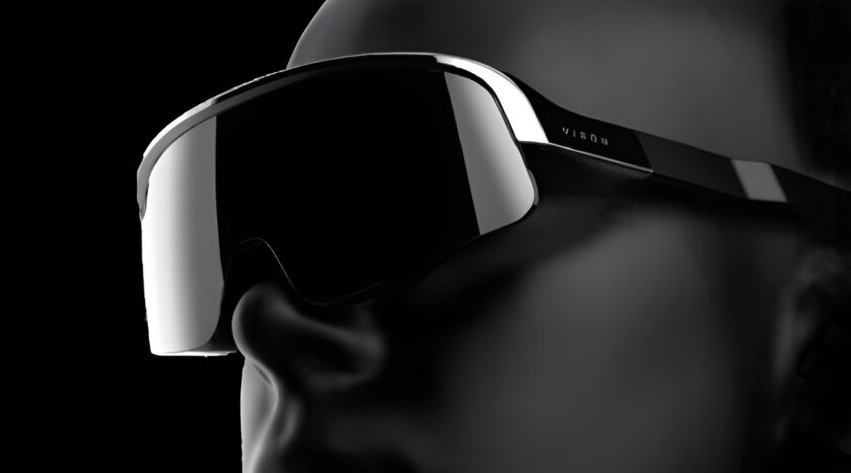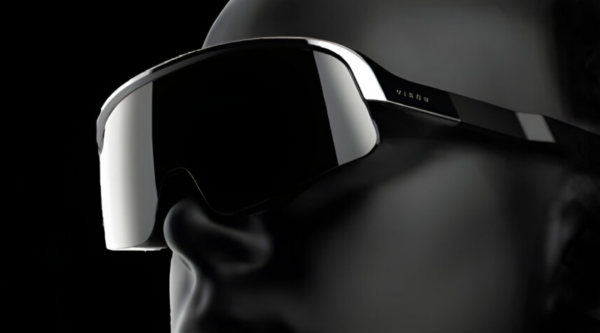
A Look At Immersed’s Visor Next-Gen XR Work-Focused Headset Inspired by Vision Pro – Tech Live Trends
Immersed Visor is a next-gen XR headset that is inspired by the Apple Vision Pro headset which targets work use cases. The company describes it as a “spatial computing device for work.”

The Immersed Visor does away with physical controllers and offers better eye-tracking capabilities. It is expected to be one of the best AR/VR headsets in the market for productivity use cases.
Until now, Immersed has been better known as a productivity-focused app that is compatible with various standalone headsets like Quest 2 and Pico 3.
Immersed is now pivoting to the hardware market with a super lightweight and ultra-high resolution headset that has a wide FOV along with other impressive features.
Immersed partnered with Qualcomm and Intel, along with an undisclosed “giant” in the AR/VR space for the headset. The XR headset spots impressive specifications and will launch in 2024. Immersed is yet to divulge the full details of the headset but a screen grab of the Visor shared by the company offers some clues. The Immersed Visor has been designed for work uses.
The Specifications of the Immersed Visor
There are some notable specifications of the Immersed Visor. It has twin 4K microOLED displays, six-degrees-of-freedom tracking along with a 100-degree field of view. It also features an HD color passthrough with a resolution that’s higher than “what’s available on the market at the moment.”
The Immersed Visor is showing certain similarities to Apple’s Vision Pro headset. The implementation of MicroOLED technology implies the inclusion of vibrant colors and deep blacks, while the utilization of densely packed displays ensures exceptional clarity. With these details in mind, the Immersed Visor seems poised to outperform a majority of other VR headsets in terms of image sharpness and contrast.
The renderings of the Immersed Visor bear a striking resemblance to augmented reality glasses, complete with earpieces replacing the conventional head strap, while still incorporating a supplementary backstrap.
The weight is comparably akin to smart glasses as well. Immersed asserts that the Visor’s weight will be 25% less than that of your phone. With modern phones increasing in size, they have become heavier as well. Assuming Immersed is referring to a substantial 200g (7oz) phone, this would imply that the Visor is approximately 150g (5oz).
Immersed’s objective involves crafting a dedicated headset specifically tailored for work use. The Visor will be meticulously customized to perfectly align with the owner’s individual Interpupillary Distance (IPD) and will incorporate appropriately sized light blockers.
Visor is More than a VR Headset
Immersed, a developer of VR desktop applications, distinguished itself by focusing solely on software development rather than hardware design—a somewhat uncommon but not entirely unprecedented approach. A similar trajectory was seen with Bigscreen VR, initially known for its streaming video app, which later ventured into hardware by crafting the compact, yet powerful Beyond PC VR headset.
The Visor stands out for its compact and lightweight design, accompanied by impressive display specifications. Unlike the Bigscreen Beyond, it lacks a specially molded facial interface. The internal visuals of the Visor, as depicted in official renders, resemble binoculars more than a traditional VR headset.
The Visor takes a unique approach by securing its light blocker around the eyes rather than conforming directly to the face. This creative strategy not only minimizes the headset’s size but also simplifies its overall aesthetic. This choice stems from the consideration that eye shapes may be more universally shared among individuals than the diverse variations in facial shapes.
As of now, it’s unclear whether Visor will have support for controllers or hand tracking. Nevertheless, users can expect the availability of prescription lenses.
Not Augmented Reality Glasses
Although there is an allusion to a glasses-esque configuration featuring a high-resolution color passthrough, it should be clarified that these do not qualify as AR glasses. Notably, the field of vision (FOV) encompasses a remarkable 100 degrees, surpassing that of smart glasses like the Xreal Air by more than double.
Given that the viewer is observing an opaque display, the color black will be entirely opaque, appearing as a solid black, in contradistinction to the partially transparent quality exhibited by smart glasses.
It’s possible to connect to tether to a computer, but this is not obligatory, as a wireless connection is also feasible. The battery life hasn’t been specified yet; however, it appears that the primary intent is to employ the Visor in conjunction with a computer link.
The Visor Targets Work Uses
While these details appear captivating, it’s important to temper our enthusiasm. Keep in mind, however, that Immersed’s Visor is tailored solely for professionals who will invest extensive hours in VR-based work.
In contrast to Meta’s Quest Pro, which essentially amounted to an upgraded Quest 2 headset, Immersed is concentrating on enhancing the Visor for seamless operation of its VR desktop application, rather than aiming for a versatile mixed reality headset.
When contrasting Immersed’s performance on a Quest Pro or Vive XR Elite with that of Visor, it becomes evident that Visor significantly reduces launch times to mere seconds. This enhancement brings Visor’s performance closer to that of a standalone display, distinguishing it from a mere remote desktop solution.
Immersed will not develop an app store for Visor nor is there an operating system. Instead, the Immersed VR app will be run for optimal speed and ease of use.
This will be welcome for dedicated Immersed users although it could also have some limitations. Immersed added that an SDK might enable additional apps later on.
The Visor will have compatibility with Snapdragon Spaces SDK. It will also leverage an onboard chip for process tracking functions.
Immersed is collaborating with Intel to enhance computer connectivity, while an undisclosed leader in AR/VR technology will assist in expanding manufacturing and channel sales operations.
While the price is still pending, it’s essential to clarify that Immersed is not being developed with consumers or gamers in mind. The product’s emphasis on premium display hardware and a work-centric design signifies its targeting of enterprise and professional clientele. Differentiating between the Visor and the Quest 3 is crucial; these two offerings are tailored for entirely separate market segments.
Embracing enhanced mobility without sacrificing screen space is the hallmark of the future workspace. The Immersed Visor ensures compatibility with Windows, Mac, and Linux laptops and computers. It introduces the innovation of five or more virtual screens, all contained within a compact headset that’s conveniently portable in the palm of your hand.


